Pabellón Hanbyeokdang (한벽당)
667.6M 2024-10-15
Girin-daero 2, Wansan-gu, Jeonju-si, Jeonbuk-do.
Ubicado en la ciudad de Jeonju de la provincia de Jeollabuk-do, el pabellón Hanbyeokdang ha sido designado Propiedad Cultural Tangible Nº 15. En 1404, un funcionario civil de la dinastía Joseon fundó esta estructura para su quinta. Hanbyeokdang se estableció al pie del monte Seungamsan con hermosos paisajes del río Jeonjucheon. En el pasado, muchos escritores buscaban este lugar para inspirarse sobre sus obras. El pabellón es famoso por la belleza del paisaje de nieblas en las montañas, haciéndolo uno de los ocho paisajes más famosos de Jeonju.
Supermercado Ahyeon (아현슈퍼)
667.4M 2024-08-14
Dongseohak-dong 854-7, Wansan-gu, Jeonju-si, Jeonbuk-do
‘아현슈퍼’는 2022년도 방영된 tnN 드라마 ‘스물다섯 스물하나’의 1990년대를 배경으로 한 촬영을 하기 위해 레트로한 옛날 분위기가 그대로 담긴 슈퍼로 꾸몄다. 드라마 촬영 후 철거되었으나 인기에 힘입어 다시 설치되었다. 이곳은 운영 중인 슈퍼가 아닌 빈 집 세트장 이며 주인공들이 앉아서 도란도란 이야기를 나누던 노란 평상이 포토 스폿이다. 이곳에서 키스에 대한 나희도(김태리)와 백이진(남주혁)의 오해 장면, 백이진(남주혁)이 오토바이로부터 나희도(김태리)를 지켜낸 장면이 촬영됐다.
Deokindang
694.2M 2024-04-07
28-3, Pungnammun 3-gil, Wansan-gu, Jeonju-si, Jeonbuk-do
063-282-6336, 010-5654-3554
Deokindang is located across from the west street of Jeonju Hanok Village. The guesthouse is surrounded by low walls, inside of which there are grass yard, stone pavement, and four traditional houses with three guestrooms, which are called the Large Room, Small Room, and Kitchen Room. Here, the "Kitchen Room” is not actually a kitchen, but a kitchen turned into a bedroom. The Large Room in the center of the main building can accommodate up to 8 people, making it a perfect place to stay for a large family. It’s furnished with thin, white calico sheets, which are very soft to the touch.
Situated on the outskirts of Jeonju Hanok Village and yet very close to Gyeonggijeon Shrine, Jeondong Catholic Cathedral, Nambu Market, and Jeonju Pungpae Jigwan (Jeongju Gaeksa. Treasure No. 583), the guesthouse is quiet and conveniently located as well for those taking a tour of Jeonju. The owner of Deokindang also owns another guesthouse called Su House, so the guests of Deokindang can have access to the Community Room of Su House.
Sala de Exhibición de Artesanías de Jeonju (전주공예품전시관)
712.9M 2024-10-15
Taejo-ro 15, Wansan-gu, Jeonju-si, Jeonbuk-do.
+82-63-282-8886
La sala fue inaugurada el día 20 de abril del 2002. Presenta una edificación tradicional y exhibe todo tipo de artesanías de la región de Jeollabuk-do. Está formada por las siguientes instalaciones anexas: el museo de exposición de artesanías, el centro de actividades, el espacio destinado a tomar té y adquirir los artículos fabricados por los famosos artesanos, y la tienda de suvenires. Entre las actividades disponibles hay artesanías en papel tradicional hanji, en cerámica, en madera, en bordados tradicionales, etc., entre otros materiales.
Yihua Hotel
713.3M 2024-04-07
76, Jeollagamyeong-ro, Wansan-gu, Jeonju-si, Jeonbuk-do
+82-63-284-6699
As a three-story building with a basement floor, Jeonju Yihua Hotel is located in Jeon-dong in the eastern part of Jeonju Hanok Village. It's a medium-sized hotel with 26 Suite, Standard Double, Standard Korean-style, and Deluxe Twin rooms. The room rates are reasonable for both tourists and business travelers. The front desk lobby is on the 1st floor, and the rooms are on the 2nd and 3rd floors. Facing the front desk are a computer with Internet connection and a printer as well as a microwave oven. The 1st floor of the hotel is rented to a cafe named "Turista," which is popular for its brunch. Many guests staying at Yihua Hotel have brunch here before taking a tour of Jeonju. Nearby tourist destinations include Gyeonggijeon Shrine, Jeondong Catholic Cathedral, Jeonju Hanok Village, JIFF (Jeonju International Film Festival) Street, and Pungpae Jigwan (Jeonju Inn). The Gyeonggijeon Shrine, Jeonju JIFF Street, and Pungnammun Gate are 3 minutes, 5 minutes, and 3 minutes away from the hotel on foot, making it a popular place to stay among Korean and foreign tourists.
Hankookjib (한국집)
742.3M 2024-04-07
119, Eojin-gil, Wansan-gu, Jeonju-si, Jeonbuk-do
+82-63-284-0086, 2224
Hankookjib literally means 'Korean house.' The restaurant serves Jeonju bibimbap, kongnamul haejangguk (spicy bean sprout soup), sagol gomtang (thick beef bone soup), doenjang jjigae (soybean paste stew), and samgyetang (ginseng chicken soup). Many well-known figures, including former presidents of Korea, have been sited as enjoying the authentic Jeonju bibimbap here.
Fine day [Korea Quality] / 좋은날 [한국관광 품질인증]
756.4M 2024-10-15
37-7, Jeondongseongdang-gil, Wansan-gu, Jeonju-si, Jeonbuk-do
+82-10-2607-3326
Good Day is a traditional Korean house situated in Jeondong Catholic Cathedral Street in Wansan-gu, Jeonju, Jeollabuk-do. It was originally built in 1942 and remodeled in 2011 as a guesthouse by the current owner. The guesthouse has most of the features of a traditional Korean house still intact, but with modern amenities added for the comfort of the guests. The floor, walls, and ceiling are coated with red clay, and the ceiling rafters are visible as in most traditional Korean houses. Many guests say that sleeping in a room made of these natural materials helps them relieve fatigue. The rooms are well-insulated and warm for the cold winter days. The guesthouse is close to Gyeonggijeon Shrine, which enshrines a portrait of Taejo Yi Seong-gye, the first king of Joseon, and is conveniently located for those wishing to take a tour of Jeonju Hanok Village featuring hundreds of traditional Korean houses, Omokdae, and Jeondong Catholic Cathedral. In addition to these tourist attractions, there is also a traditional marketplace called Nambu Market with lots to eat and see. The guesthouse owner named it "Good Day" because he wishes all his guests to have a good day during their stay. He decorated every corner of the guesthouse with this in mind. The grass yard and colorful garden are beautiful throughout the seasons. The garden includes a mix of wild flowers, pine nut trees, fig trees, pomegranate trees, grape vines, and jujube trees. The “toetmaru (open living room with wooden floor)" right in front of the garden is also decorated with small flowerpots. The “toetmaru” is the most popular place among the guests because it’s a great place to enjoy the sun and breathe in the scent of flowers. On a rainy day, you can hear the raindrops falling down the eaves. There are six guestrooms at the guesthouse, named "Spring Waltz,” “Summer Tiffany,” “Autumn Pomegranate,” “Winter Festival”, "Sunshine", and "Welcome." The ceiling rafters are visible in all the rooms as in most of traditional Korean houses. The rooms are furnished with TV, refrigerator, and air conditioner. The bathroom comes with shower booth and bidet. People of different age groups come to stay at this guesthouse, and most of them say the guesthouse is clean and comfortable to stay in, thanks to the owner who sun-dries the sheets and blankets on the rooftop, cleans the rooms, and cultivates the garden every day of the year to make sure that the guests can have a comfortable, memorable stay. The guesthouse is conveniently located near a number of tourist destinations as well.
Aldea Tradicional de Jeonju (Cittaslow) (전주한옥마을 [슬로시티])
786.6M 2024-04-06
Girin-daero 99, Wansan-gu, Jeonju-si, Jeonbuk-do.
La Aldea Tradicional de Jeonju (Hanok Maeul) está ubicada en las zonas de Pungnam-dong y Gyo-dong. En esta área se encuentran concentradas aproximadamente 800 casas tradicionales de Corea, las hanok. Este lugar es famoso por conservar intacto el estilo tradicional, proporcionando la oportunidad de disfrutar el ambiente antiguo y folclórico del país.
Lo más elegante de esta aldea es seguramente el estilo de los techos de las hanok. La peculiaridad de esta vivienda es que el borde de los techos está ligeramente dirigido hacia el cielo. La estructura de estas casas se divide en dos secciones: anchae y sarangchae. Anchae, siendo el lugar donde permanecen las mujeres, también es llamado gyusubang; mientras que el sarangchae es el lugar utilizado por los hombres, también llamado seonbibang. La construcción arquitectónica diferencia el sector destinado a los hombres y mujeres. De tal manera, el anchae, por ser el lugar donde residen las mujeres, se localiza en la parte más resguardada y silenciosa de la casa.
Otra característica es que los cuartos son de ondol, un sistema de calefacción instalado en el suelo. La estructura del ondol es bastante simple, consiste en aplicar el sistema de calefacción debajo del piso, con pasajes horizontales para el humo y una chimenea vertical para el escape. Una de las grandes ventajas es que en verano es fresco y en invierno, caliente.
Además de los recorridos, observando la sabiduría y las costumbres tradicionales de la antigüedad, otro de los atractivos lo componen las actividades culturales que consisten en experimentar las habitaciones de ondol y degustar del plato típico famoso de la ciudad, el bibimbap (arroz mezclado con surtido de vegetales).
Jeonju Nanjang (전주난장)
816.4M 2024-04-06
Dongmun-gil 33-20, Wansan-gu, Jeonju-si, Jeonbuk-do
Sendero Baramssoeneun-gil (바람쐬는길)
821.9M 2024-04-06
Baramssoeneun-gil 21, Wansan-gu, Jeonju-si, Jeonbuk-do
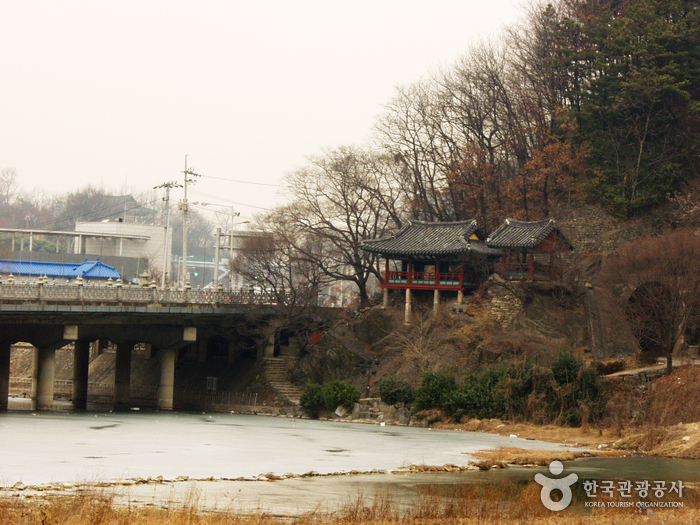
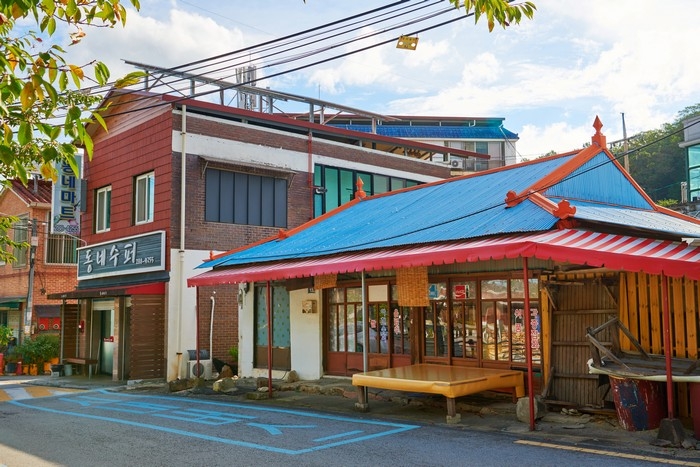
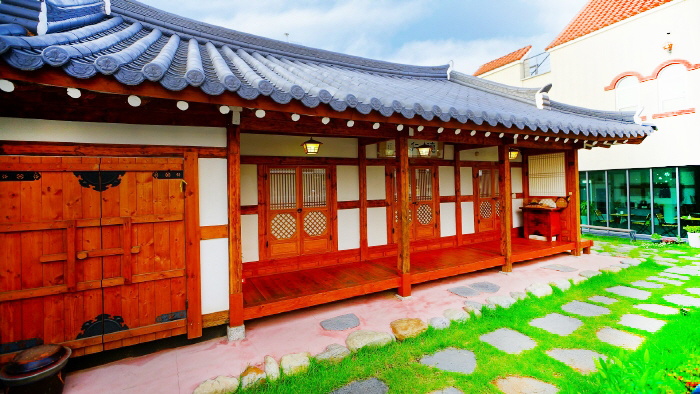
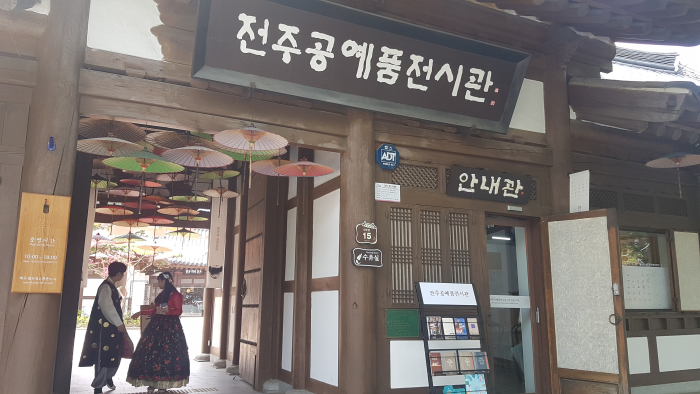
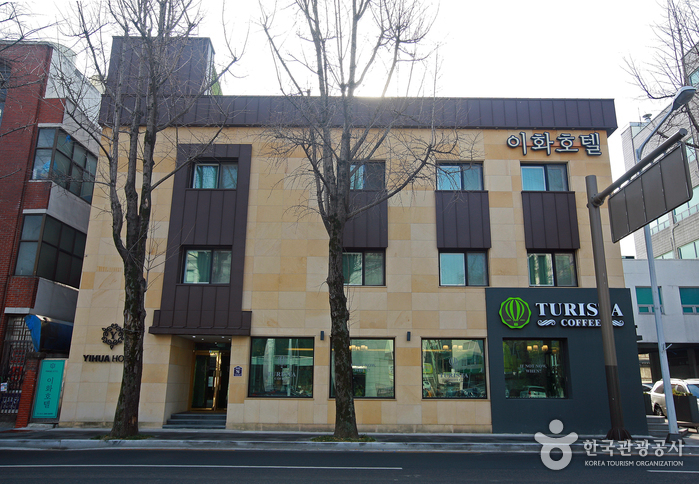
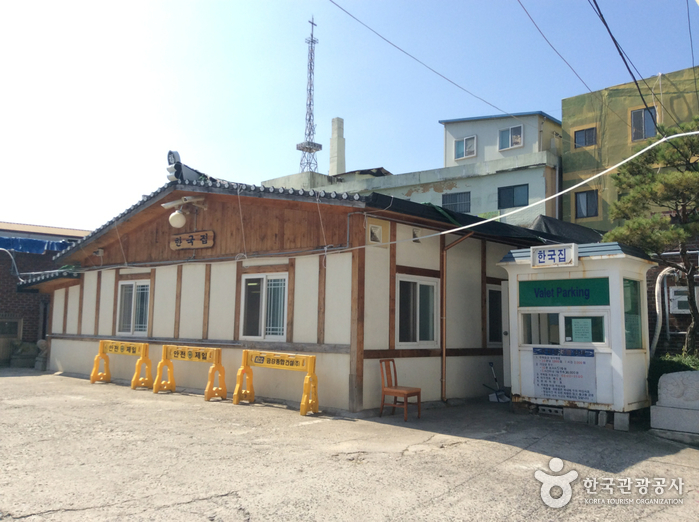
![Fine day [Korea Quality] / 좋은날 [한국관광 품질인증]](http://tong.visitkorea.or.kr/cms/resource/89/2597389_image2_1.jpg)

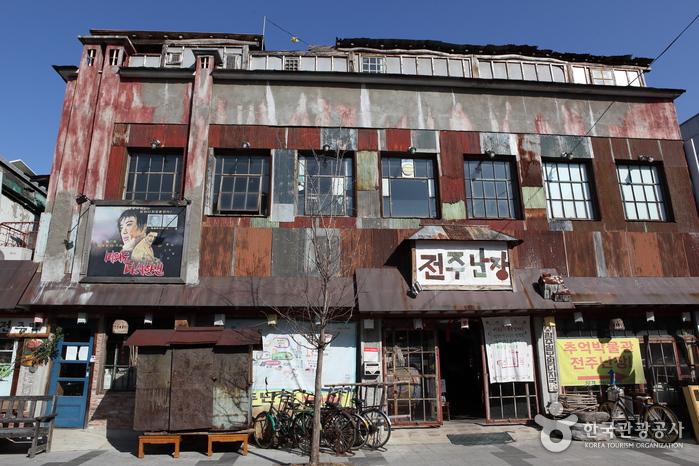
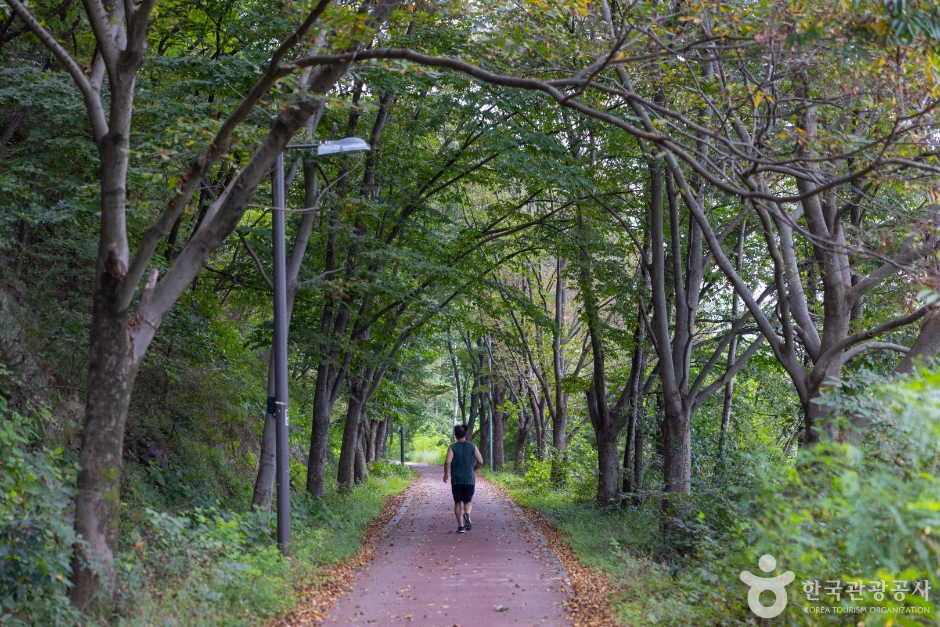
 Español
Español
 한국어
한국어 English
English 日本語
日本語 中文(简体)
中文(简体) Deutsch
Deutsch Français
Français Русский
Русский